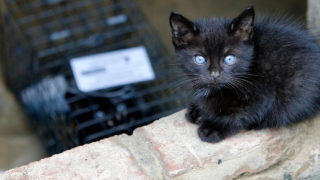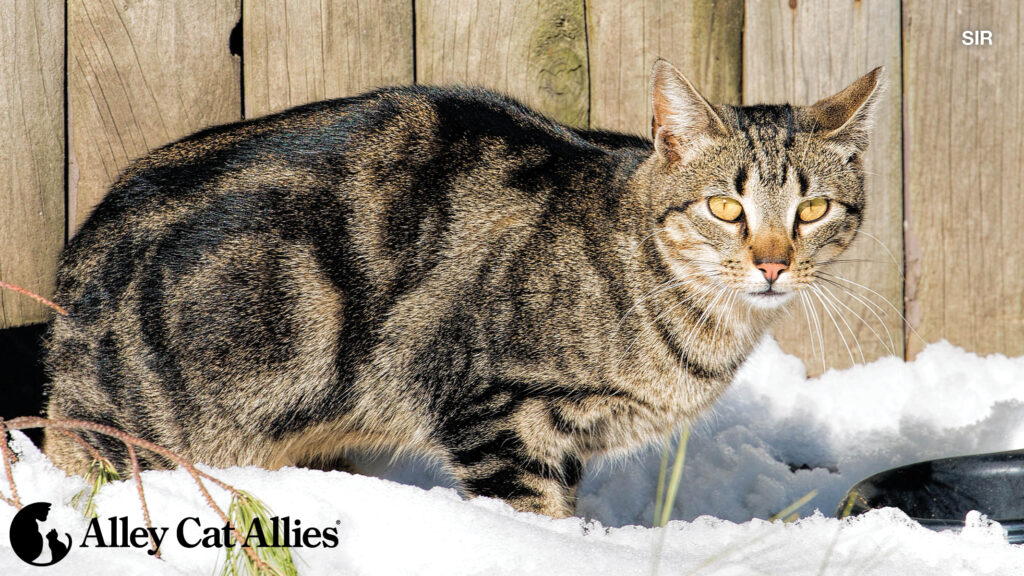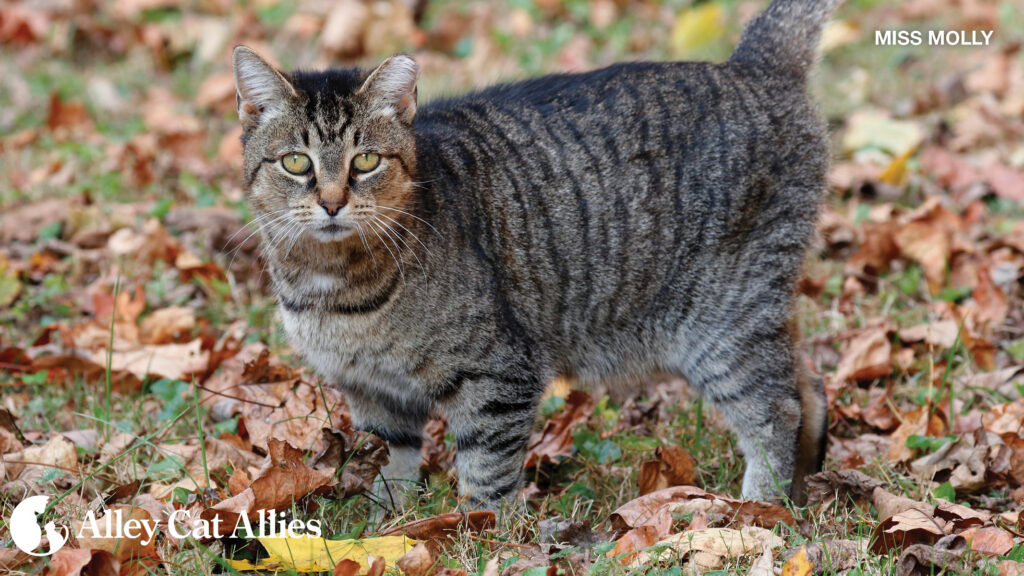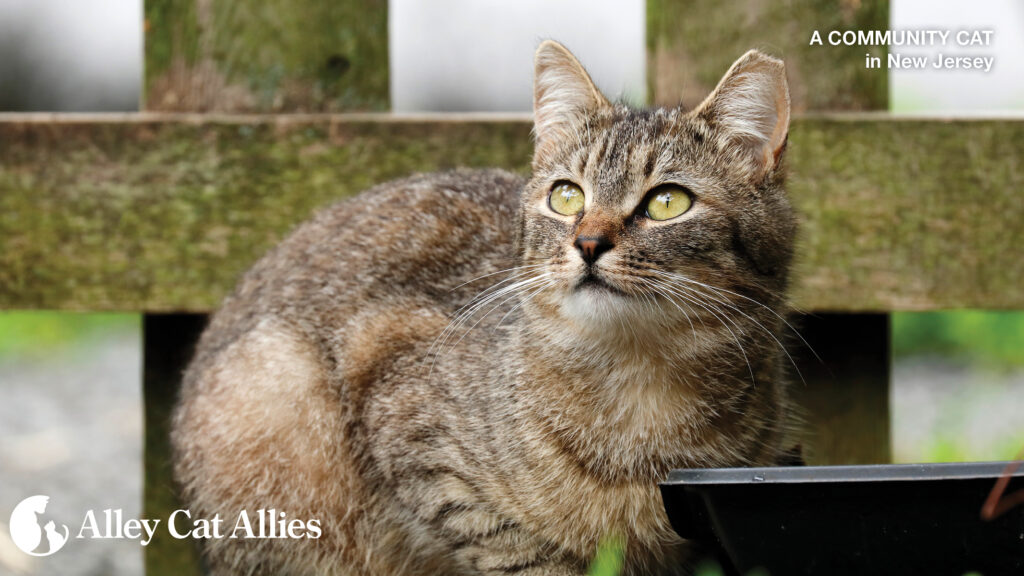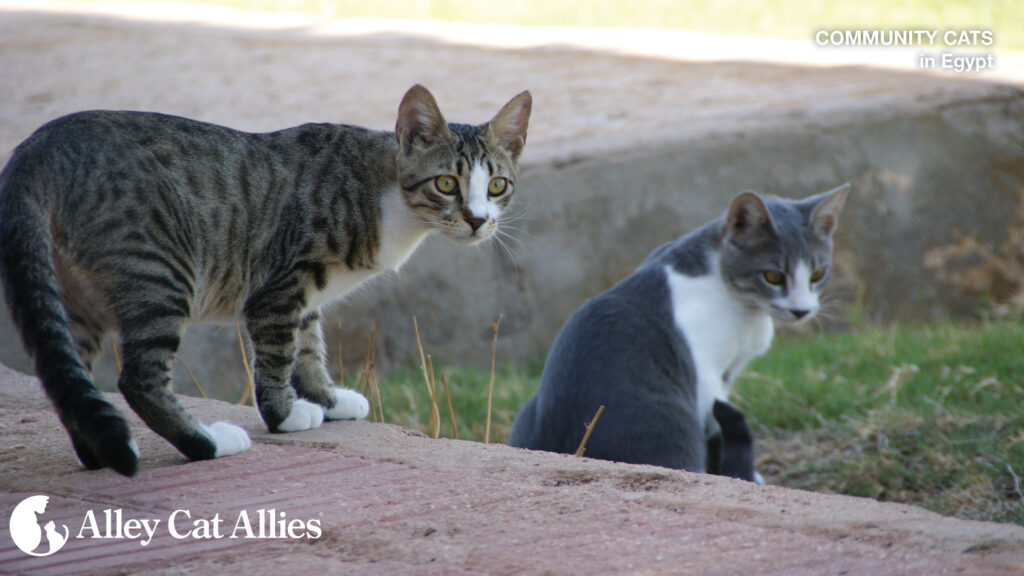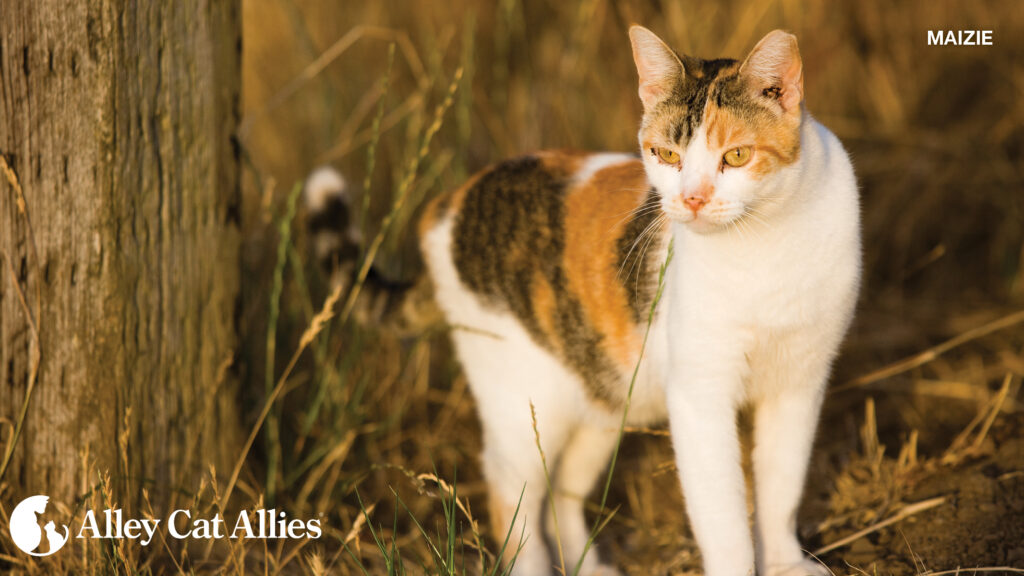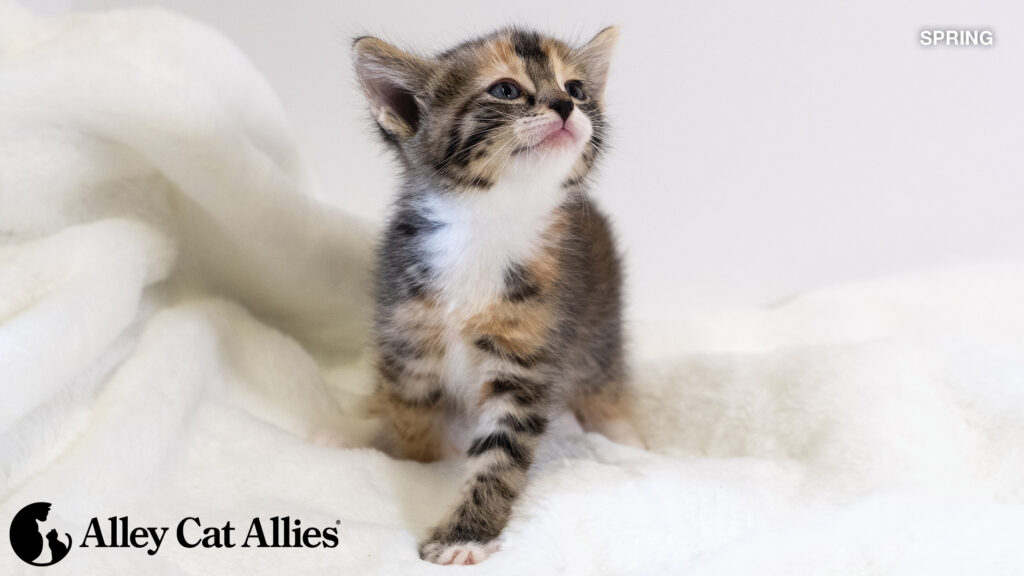Close your eyes and picture a cat for a moment. There’s a good chance you’re imagining stripes!
That’s because tabby cats are the most common cats around, which makes them pretty iconic! Rather than a specific breed of cat, tabby refers to a coat pattern. More accurately, it encompasses a variety of coat patterns.
From brown to orange to silver to buff, tabbies come in all kinds of colors. Check out a black cat’s fur in the sunlight sometime and you may see tabby stripes hidden there, too!
Today is National Tabby Day—a day to celebrate tabby cats of all stripes and of all walks of life. We at Alley Cat Allies are celebrating in our favorite way: with some education on cat facts!
What Is a Tabby Cat?
Tabby refers to a specific coat pattern that is the most common in domestic cats. Typical traits of a tabby include:
- An M-shape pattern on the forehead
- Stripes across the cheeks and near the eyes
- Though typically striped across the body, there are more variations
That distinctive ‘M’ on the forehead is the hallmark of the tabby. In fact, there are a multitude of legends around tabby cats sporting this particular marking!
Tabby patterns span back to the ancestor of the domestic cat species, or Felis catus. The stripes of that ancestor, through generations of cats, evolved to include a variety of different patterns and markings over time. The genes that create tabby coats are dominant, which is why tabbies are so common.
What Are the Types of Tabby Patterns?
There are four most common types of tabby pattern, but plenty of other variations! Those four are:
1. Classic
Classic tabbies are characterized by wide, dark stripes laid out over the cats’ sides in a marbled, circular pattern. Their signature swirl makes them easy to spot!
2. Mackerel
Despite ‘classic’ referring to a different tabby pattern, mackerel tabbies are the true classic tabby! Mackerel refers to the most common, striped variation of tabby pattern. Mackerel tabbies have thin, vertical stripes across a cat’s sides and legs, and a thicker, dark stripe down the length of the cat’s back.
3. Ticked
Ticked tabbies have no body stripes—the individual hairs have bands of color! However, they still sport thin stripes on their face, legs, and tail. Ticked tabbies are among the most uncommon tabby patterns.
4. Spotted
Rather than stripes across their bodies, spotted tabbies have, well, spots! They can look as if their tabby stripes are “broken” or have larger and more distinct spots along their body. Spotted tabbies usually have stripes around their face, legs, and tail
But that’s not all! Some other tabby variations include:
Patched
Patched tabbies are primarily white with splotches of color that have those signature tabby stripes.
Tortoiseshell Tabby
When tortoiseshell—or the mottled combination of black, brown, and orange fur (or the more diluted grey and buff)—meets tabby! These cats are sometimes affectionately nicknamed ‘torbies’.
Calico Tabby
The calico’s distinct patches of solid orange, black, and white fur (or a diluted version with buff, gray, and white) combine with tabby stripes.
Tortoiseshell Calico Tabby
Known as the ‘torbico’, these cats combine all three of these iconic coat colors and patterns!
Why Knowing Tabby Patterns is Important
These are more than just fun facts: They can be critical to identifying a cat! Knowing the right words to use for tabby patterns helps you accurately describe a cat’s physical characteristics. Should a cat become lost, or impounded in an animal shelter, being able to communicate their exact characteristics can help bring them home!
Our Cat Identification Guide is a full toolkit of official descriptions for all kinds of cats. From tabby to tortoiseshell, learn the right terms for all. You can also record your cats’ characteristics, tabby and all, with our worksheet or bring home our quick guide poster.
To all the tabbies who make our lives fuller—happy National Tabby Day!

